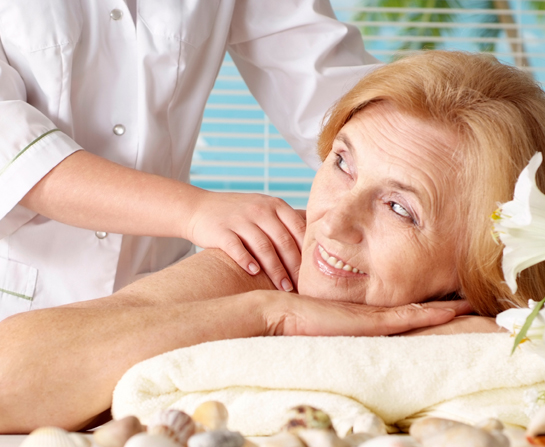Arthritis & Massage
April 29, 2022 Return

Arthritis does not recognise age or origins; it causes disability and morbidity in millions across the world. Statistics show that more women are at risk of this disorder, and there are also more women who suffer from arthritis compared to men. There are many types of arthritis with varying causes and symptoms, but the one thing that they all have in common is pain.
Arthritis has been and is being extensively researched for a better understanding of its root causes and elimination strategies. While there is no absolute cure for arthritic conditions, some treatments and measures do help provide symptomatic relief. One such measure that can help to provide temporary and timely relief is massage therapy.
Massage has been in existence since centuries and has been one of the oldest techniques of pain management. It has traditionally been used for improving circulation and flexibility, reducing inflammation, pain stress and anxiety. It can slow down the degeneration process, ease the pain, increase the level of comfort and improve mobility. Therefore, it can be a great complement to any arthritic pain management and lifestyle improvement programs.
The compression, friction, kneading and vibration motions in massage therapy provide much needed positive support and comfort arthritis patients such as:
Circulatory Problems:
Massage therapy improves blood circulation and flow to the affected areas. This helps to provide much needed nutrition and oxygen to the arthritic joint or muscle. It also helps to clean the affected area’s tissues of the arthritic inflammation’s by-products (e.g. lactic acid). All these effects result in better mobility and reduced inflammation.
Muscle Stiffness:
Muscles around an arthritic joint or bone usually tighten in order to provide protection to the affected tissue, resulting in muscle stiffness. Massage therapy aids in release the muscular tension and relaxing them, leading to improved mobility.
Pain:
Massage therapy also releases endorphins, which are natural pain killers produced by our body.
Mobility Issues:
Due to its effects on reduction of inflammation and pain, massage therapy enables the arthritic patient to have improved mobility, leading to a slower rate of tissue degeneration.
General Ill-health:
Massage therapy can trigger our body to produce less cortisol ( “the stress hormone”) and more serotonin ( “the feel-good” or “happiness” neurotransmitter). Massage therapy also lowers the level of Substance P (commonly known as “the pain neurotransmitter”), thus reducing pain and improving sleep.
There are various types of massages that can be used. It ultimately dependson the type and degree of discomfort or pain experienced. Some common types are:
- Swedish massage, which incorporates long strokes of muscles and tissues.
- Hot stone massage involves the placement of hot smooth rounded stones on the back as one lies on her stomach.
- Ayurvedic massage, involving the use of certain medicinal oils.
- Deep tissue massage. The therapist places additional pressure deep into the tissues of affected areas.
- Anma is the Japanese-style kneading action on muscles without the use of oils.
- Lomilomi, a Hawaiian technique combining diet and meditation along with massage.
- Thai massage is carried out in various yoga-like body positions.
- Myofascial release massages and relaxes the fascia, a band of connective fibers (mainly collagen) that is located under the skin to join and stabilize internal organs, muscles and tissues.
- Shiatsu is a Japanese massage that applies pressure to specific points of the body using fingers and palms in a continuous rhythmic motion.
- Trigger point massage applies a combination of pressure and vibration on certain points on the body .
When deciding on the massage therapy that is most suited to you, remember that arthritic joints are extremely sensitive to pressure and touch. Talk to your doctor and a qualified message therapist for more information.
References:
Arthritis Foundation. Available at www.arthritis.org
American Massage Therapy Association (AMTA); Available at www.amtamassage.org
Lorig K., Holman H., Sobel D., Laurent D., Gonzalez V. and Minor M. (2013). Understanding and Managing Common Symptoms, Living a Healthy Life with Chronic Conditions: For Ongoing Physical and Mental Health Conditions (4th ed.). Canada: Bull Publishing Company.
If you like this article, do subscribe here.
